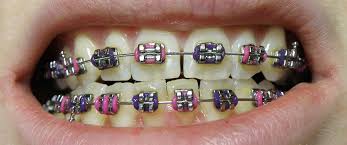Deciding to get braces is one of the most rewarding choices you can make for your smile and your confidence. However, like any medical or dental treatment, braces come with questions, expectations and responsibilities.
Both young and adult patients walk into their first orthodontic consultation excited but they are not sure of what the process really involves. As a dentist, I have learned that the better informed you are from the beginning, the smoother and more positive your journey will be.
So consider this your friendly guide on what you need to know before getting orthodontic treatment which is commonly known as braces even if there are other types like clear aligners.
Firstly, this helps you to understand what orthodontic treatment is really all about. Braces are not just about cosmetic straightening.
They work by gently guiding teeth, bone and supporting structures into healthier alignment.
When your teeth are properly aligned, it improves their function. It reduces strain on your jaw joint. This makes cleaning easier. As a result, it protects you from future problems like gum disease, tooth wear and cavities. Straight teeth are beautiful.
They are also healthier teeth based on this explanation above.
Before starting treatment, an assessment is made which involves whether you need braces, what type suits you best and whether your gums and teeth are healthy enough for movement.
This is why the initial records such as panoramic X-rays, photographs and dental impressions or digital scans are important.
They help create a clear picture of your bite, bone levels, airway and habits like thumb sucking.
Any hidden issues such as impacted teeth can also be noted. Nothing about orthodontics is guesswork. Every bracket placement and every wire adjustment is guided by a custom plan that begins with this detailed assessment.
Secondly, once you are cleared for treatment, you will need to choose the type of braces.
Traditional metal braces remain the most common affordable option. Ceramic braces are more aesthetic and blend with tooth color but they can be slightly more fragile.
Self-ligating braces use special clips instead of elastic ties which can reduce friction and sometimes shorten treatment time.
Then there are clear aligners which are transparent plastic trays that move teeth without brackets or wires. These are popular among adults though they require discipline because you must wear them 20 to 22 hours a day.
Some may wonder, “which one should I choose?” Before you decide, remember the “best” braces are not always the most fashionable. They are the ones that suit your smile needs, lifestyle, dental condition and your budget too. It is advised to follow clinical reasoning and not trends.
Many patients are surprised to learn that braces do not hurt when they are applied. The actual bonding appointment is painless. The discomfort usually comes later a few hours after the wires start applying gentle pressure. You may feel soreness for three to seven days especially after each adjustment. This tenderness is normal and temporary. Think of it like sore muscles after a workout. This is because your teeth are simply responding to controlled movement. Soft foods, warm salt water rinses and over-the-counter pain relief can help during these periods.
What requires more adjustment is the way braces change your daily habits. Oral hygiene becomes more important than ever.
Brackets and wires easily trap food and plaque and poor cleaning can lead to cavities, white spots, inflamed gums and bad breath. Brushing and flossing needs to be done more regularly.
A floss threader or orthodontic flosser helps. In some cases, an interdental brush or water flosser may be used. Patients who take their oral hygiene seriously finish treatment with beautiful healthy teeth while those who ignore it often finish with straight teeth but new problems to fix.
Diet also changes. Hard, sticky and chewy foods can break brackets or bend wires. This slows down treatment and it can reverse weeks of progress. Therefore, you are advised to avoid foods like nuts, popcorn, hard sweets, chewing gum, ice and sugar canes etc.
Even apples and carrots need to be cut into smaller pieces. It may seem like a sacrifice at first but most patients adjust quickly after the first few weeks.
One thing every patient should understand before getting braces is that orthodontic treatment is a partnership. Your orthodontist provides the expertise, but you provide the discipline.
Rubber bands (elastics) are a good example. Elastics help correct bite issues like overbites, underbites, and crossbites by guiding the jaw and teeth into proper relationship.
They must be worn exactly as instructed. Patients often think treatment is slow, when in reality it’s inconsistent rubber band wear that delays progress. Wearing them faithfully can shorten treatment time by months.
Speaking of treatment time, every patient’s journey is different. Most cases take between 12 and 24 months, though some mild cases may finish in under a year while complex cases take longer.
Treatment time depends on factors such as age, bone density, bite severity, oral hygiene and compliance with instructions. For instance, the younger the person with a mild misalignment, the shorter the duration of treatment. So bear in mind that orthodontic treatment is a gradual process that is designed to move teeth at a biologically comfortable pace. It is not a quick fix.
Speech changes are another thing that you should know about. There can be temporary changes especially with appliances like expanders or lower lingual braces.
However, the mouth adapts quickly. Within a few days to a week, most patients speak normally again. If you ever find yourself lisping or struggling with certain sounds, practicing reading aloud or singing can help.
Another important part of orthodontic treatment is the possibility of additional procedures. Some patients need extractions to create space or balance the bite.
Others need what is called interproximal reduction. This is where tiny amounts of enamel are smoothed between teeth. In children, expanders or habit-breaking appliances may be required before braces are even applied. None of these are signs of failure.
They are simply tools to achieve a good outcome.
And then there’s retention. Many people misunderstand this part. Braces straighten your teeth but retainers keep them in their new position. One amazing fact is that teeth have memory of their previous position.
They naturally want to shift due to age, growth and muscle forces. Be prepared that if you do not wear your retainers after braces, your results will relapse. It is not negotiable.
The good news is that wearing retainers becomes second nature and they are far easier than braces.
Emotionally, you should prepare yourself for the psychological part of the journey. The first few days feel strange.
You might salivate more but these concerns fade quickly. Cost is another factor patients must understand upfront.
Orthodontic treatment is an investment which is often spread out over monthly payments.
Fees depend on many factors. Some of them include the complexity of the case, type of braces and duration.
Before you begin, you will be provided a transparent written treatment plan and payment structure.
Never be shy to ask questions because clarity protects both you and your provider.
Finally, remember that orthodontic treatment is not only for children.
Adults can straighten their teeth too and they make up a growing portion of orthodontic patients worldwide. Whether you are 12 or 52, you can benefit from a healthier bite and a confident smile.







